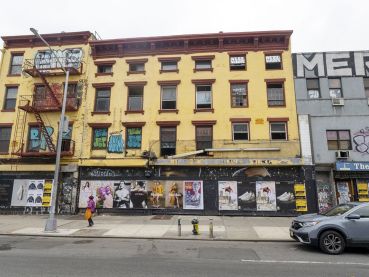Florida Lawmakers Update Live Local Act But Leave 1-Mile Radius Intact
Glitch bill strengthens the law, while adding some protections for single-family neighborhoods
By Chava Gourarie March 5, 2024 9:00 am
reprints
Florida lawmakers have passed a bill updating last year’s Live Local Act, offering some concessions to single-family neighborhoods while ultimately expanding the law’s purview even further.
The original Live Local Act was designed to increase workforce housing development, and its main provision allowed developers to bypass local zoning restrictions on projects where at least 40 percent of units are priced as workforce housing. The law requires local administrative approval, pre-empting community review.
Many local officials are critical of its top-down approach, concerned about the extent to which it interfered with their ability to manage city planning.
That is why the bill’s sponsors introduced the so-called 2024 glitch bill. “These are very large pieces of legislation,” Rep. Vicki Lopez, who represents the Miami metro in the state House, told Commercial Observer in a February interview. “There’s always more to improve.”
However, while the glitch bill was initially an attempt to assuage concerns of local officials, and came with the backing of the Florida League of Cities, an advocacy group, the final version kept two hotly debated provisions regarding building height allowances and where Live Local provisions can be applied, and then added new pre-emptions limiting the input of local governments.
“The original amendment to the Senate bill was a League of Cities amendment that was trying to give local governments back control of the issue,” said Keith Poliakoff, a partner with Government Law Group, who represents developers pursuing Live Local Act projects. “Fortunately, the Florida Legislature realized if they made those amendments it would undo [the original law]. So they actually made the law stronger to the chagrin of the local governments who were lobbying to make the law ineffective.” (The Florida League of Cities declined to comment.)
A key feature of the original Live Local Act was that developers can build up to the height of any building within a one-mile radius if a project met the Live Local affordability requirements.
Earlier iterations of the 2024 bill would have cut that radius down to a half-mile, but the final version keeps the one-mile radius, while carving out an exemption for single-family neighborhoods. In addition, lawmakers had debated whether to restrict Live Local’s application to industrial assets, but that remained intact.
To protect residential neighborhoods, the 2024 update requires that properties adjacent to single-family lots on at least two sides can be built up to three stories, the pre-existing allowed height in the zoning jurisdiction, or up to 150 percent of the tallest adjacent zoning jurisdiction.
“Instead of making a blanket change, [the law] was only enhanced in regards to that point of protecting single-family neighborhoods,” said Anthony De Yurre, a lawyer with Bilzin Sumberg, who was involved in developing the glitch bill.
The update law also expanded on the original version, introducing a floor area ratio (FAR) pre-emption parallel to the height and density allowances in the 2023 act, restricting FAR caps to 150 percent of the highest allowable FAR in the jurisdiction.
“There were two limitations to the original bill — one was FAR and one was parking,” De Yurre said. “We were given a new ceiling for density and height, but in many districts we ran out of square footage.”
The new bill also includes clarifications on how the Live Local Act interacts with other development bonuses or variances. In particular, the bill clarified that a Live Local Act project does not preclude a project from receiving other local development bonuses that affect density, height or FAR — and that these bonuses must be administratively approved. For example, projects that also qualify as transit-oriented developments can apply the associated bonuses.
Finally, the 2024 bill clarifies that the market-rate housing at a Live Local project can be for-sale units, allowing for a mixed project with market-rate condos and rentals with restricted pricing.
“It’s another opportunity for mixed income, which I think is the best part of the bill,” said De Yurre.
Meanwhile, residents feel completely blindsided by a planning process that essentially excludes them. During a public meeting addressing a 12-story Live Local project in Hollywood Beach, one resident registered her frustration. “We hear about the legislature, we hear about the governor,” Hollywood resident Helen Chervin said. “But he don’t live here. We do.”
The update bill has passed in both the House and Senate, and now goes to Gov. Ron DeSantis to await his signature.
Chava Gourarie can be reached at cgourarie@commercialobserver.com


